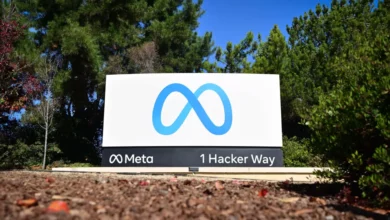How Did The Internet Change Music? Part 2

Correspondente
Musical
Hello everyone, welcome to the Part 2 of how the internet changed the face of music both as a music consumer and as a music creator.
Last issue we focused on the birth of the internet in 1991 and the birth of the MP3 in 1995. We will fast forward ourselves 4 years from that to year 1999, the new millennium approaching. We at this time have people exchanging albums with one another, then just the songs they wanted. This would be done on the first P2P (peer-to-peer) platform known as Napster. It would ultimately lead past the immediate exchange of albums to just going to get the song you want from a huge list of available versions. As a music consumer, this would be akin to walking into your favorite store & the employee welcoming you says “Hi there, go ahead, take whatever and as much as you want, free!” What made this so wild, was that the songs you were considering buying the CD next week, suddenly does not get bought because you just found it there on Napster and downloaded it, or the song you wanted, FREE. This happened while you were there looking for something else and happened to stumble upon it. So much was so available, all of a sudden, within 5 years of the birth of the MP3 and within 9 years of the birth of the World Wide Web.
Behind the scenes, musicians were scrambling, but even more so – the record companies, suddenly losing money in troves. “Why pay $20 for an album when I can get the one song I want FREE?” people would ask. Laws were adjusted, digital mediums put into copyright laws and the platform Napster with 80 million users worldwide was shut down in 2001. The damage was done however as spinoff platforms would pop up, such as Audio Galaxy, Limewire, etc., What was once a $40 billion-dollar-per-year industry saw its profits crumble to half of that within those 5 years since the birth of the MP3. A COLLOSSAL collapse of what was once a thriving industry.
In 2001, Warner Bros. and Sony Music approached Apple for help in stopping the demise of the music industry which was crumbling at their feet. Apple leaned towards Warner and in 2002 with a deal in place, Apple with its own digital store set up, set out in search of the other major record companies to join in. The 99 cent price tag per legal download you have seen there since day 1 was actually Warner’s insistence, as all the other major record companies (EMI, Sony, Universal) actually wanted to have a $3.49 price tag, but upon Warner’s insistence that a 99 cent price tag would mesh with a consumer’s emotional impulse purchase, the other major record companies agreed to follow suit and provide their full libraries digitally to Apple to have available on iTunes at a slightly better quality version (192k instead of many standard 128k MP3’s people would download everywhere else. This would be compounded with the introduction of the iPod, a convenient small music player that can (at first release of a 5 gig model) hold up to about 1300 songs. Many 3rd party music players would soon show up, constantly pushing the envelope in terms of storage capabilities.
“You mean to tell me all of those hundreds of LPs I own can fit into that little music player?” Oh most definitely. Better yet, why not only put the songs you want on there and save yourself from skipping forward through songs you did not want?
The next significant chapter came in 2005 with the birth of Youtube. While it at first was a platform where people can upload videos, funny events, odd things, etc, this specific platform would singlehandedly alter the landscape for the music listener. This would be because all of the bands / musicians / record labels would eventually put their music videos there to be included in the massive viewership that YouTube had in such a short time. Once mobile phones caught up with data / WiFi and could suddenly STREAM the music video which had the song you wanted, you had for the first time – accessibility to the song you want “at that very moment”. This is undoubtedly a unique time to be in, where demand and immediate availability are the prime concern for anyone, not just the youth. The older generation is getting used to this sudden availability as well. You want lyrics to a song? You can google them instantly. I remember sitting patiently with a pencil and paper and a cassette machine rewinding and fast forwarding a song trying to get the words. How easy is this now? Incredibly convenient, but also good at showing how wrong you were at some of the words you thought they were!
This is just the music end of things, – movies, software programs, newspapers and ebooks all have faced the same fates, all available on those P2P platforms, or YouTube or simply going to websites to learn of the news. We are all connected to information, it would have been foolish to think that music wouldn’t have been included in the quest to be connected to all that we want access to immediately.
NEXT: How Did The Internet Change Music – Part 3: The Musician’s Perspective








Redes Sociais - Comentários